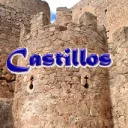• PALENCIA 2ª Parte: Iglesia Convento de San Pablo, Iglesia Santa Marina, Palacio Episcopal, y Catedral de San Antolín.
 Palencia es una ciudad que te sorprende, pues a pesar de su dimensión, te ofrece innumerables sitios para visitar de una forma cómoda paseando por sus calles y plazas, y aquí tienes la segunda parte de las visitas, espero te guste y disfrutes.
Palencia es una ciudad que te sorprende, pues a pesar de su dimensión, te ofrece innumerables sitios para visitar de una forma cómoda paseando por sus calles y plazas, y aquí tienes la segunda parte de las visitas, espero te guste y disfrutes.
Encontraras las siguientes visitas:
- Iglesia del Convento de San Pablo.- El templo de San Pablo fue erigido sobre la iglesia que se construyo en 1289 por Sancho IV y con importantes reformas entre los S. XIV y XVI con un estilo gótico tardío y transformado su capilla Mayor entre 1514 y 1534 al demolerse la primitiva, para realizar una nueva que bajo el patronazgo de los Rojas, Marqueses de Poza y Señores de Monzón tuvieran sus enterramientos en la misma.
- Iglesia de Santa Marina.- Templo que data del S. XV, pero con una importante reforma en el S. XVII de estilo castellano.
- Museo Diocesano de Arte.- En el Palacio Episcopal. Interesante Museo que por imposibilidad de tiempo no entramos para ver sus diecisiete salas que dispone donde hay 15 siglos de historia.
- Y la Catedral de San Antolín.- Esta interesante catedral que aún conserva dentro de la misma, restos de la sede visigótica, pasando por el románico y el colosal templo construido en estilo gótico en los Siglos XIV al XVI.
Puedes descargarte el PDF con información, planos, fotos y contactos.
Pulsar sobre la imagen con el botón derecho y guardar como…para descargar y llevar el archivo PDF en tu tablet o smartphone.
-
PALENCIA 2nd Part: Church of San Pablo Convent, Santa Marina Church, Episcopal Palace, and San Antolín Cathedral.
Palencia is a city that surprises you, because in spite of its size, it offers innumerable places to visit in a comfortable way walking through its streets and squares, and here you have the second part of the visits, I hope you like it and enjoy it.
You will find the following visits:
- Church of the Convent of San Pablo.- The temple of San Pablo was erected on the church that was built in 1289 by Sancho IV and with important reforms between the S. XIV and XVI with a late Gothic style and transformed its main chapel between 1514 and 1534 when the primitive was demolished, to realize a new one that under the patronage of the Rojas, Marquesses de Poza and Señores de Monzón had their burials in it.
- Church of Santa Marina.- Temple dating from the XV century, but with an important reform in the S. XVII Castilian style.
- Diocesan Museum of Art.- In the Episcopal Palace. Interesting Museum that for impossibility of time we do not enter to see its seventeen rooms that have where there are 15 centuries of history.
- And the Cathedral of San Antolín.- This interesting cathedral that still conserves within it, remains of the Visigothic site, passing through the Romanesque and the colossal temple built in Gothic style in the XIV to XVI centuries.
You can download the PDF with information, plans, photos and contacts.
Click on the image with the right button and save as … to download and bring the PDF file to your tablet or smartphone.
-
PALENCIA 2ème partie: église de San Pablo, église de Santa Marina, palais épiscopal et cathédrale de San Antolín.
Palencia est une ville qui vous surprend, car malgré sa taille, elle offre d’innombrables endroits à visiter de manière confortable en parcourant ses rues et ses places, et ici vous avez la deuxième partie des visites, j’espère que vous l’aimerez et l’apprécierez.
Vous trouverez les visites suivantes:
- Eglise du couvent de Saint-Paul: L’église Saint-Paul a été érigée sur l’église construite en 1289 par Sancho IV et des réformes majeures entre S. XIV et XVI avec un style gothique tardif et transformé sa chapelle principale entre 1514 et 1534 quand le primitif a été démoli, pour en réaliser un nouveau que sous le patronage des Rojas, les marquis de Poza et Señores de Monzón avaient leurs enterrements en elle.
- Église de Santa Marina.– Temple datant du XVe siècle, mais avec une réforme importante dans le style castillan S. XVII.
- Musée diocésain d’art. Dans le palais épiscopal. Musée Intéressant que pour l’impossibilité de temps nous n’entrons pas voir ses dix-sept salles qui ont où il y a 15 siècles d’histoire.
- Et la cathédrale de San Antolín.- Cette cathédrale intéressante qui conserve encore en son sein, reste du site wisigothique, en passant par le temple romain et le temple colossal construit dans le style gothique aux XIVe et XVIe siècles.
Vous pouvez télécharger le PDF avec des informations, des plans, des photos et des contacts.
Cliquez sur l’image avec le bouton droit et enregistrez sous … pour télécharger et apporter le fichier PDF sur votre tablette ou votre smartphone.
-
PALENCIA 2. Teil: Klosterkirche San Pablo, Santa Marina Kirche, Bischofspalast und San Antolín Kathedrale.
Palencia ist eine Stadt, die Sie überrascht, denn trotz seiner Größe, unzählige Orte bieten in einem bequemen Spaziergang durch die Straßen und Plätze, und hier der zweite Teil der Besuche zu besuchen, ich hoffe, Sie mögen und genießen.
Sie finden folgende Besuche:
- Kirche des Klosters von St. Paul: Die Kirche von St. Paul wurde auf der Kirche im Jahr 1289 von Sancho IV und wichtigen Reformen zwischen S. XIV und XVI mit einem spätgotischen Stil und verwandelte seine Haupt Kapelle zwischen 1514 gebaut errichtet und 1534 den Grund abzureißen, einen neuen unter der Schirmherrschaft des Roten, Marquis von Poza und Herren von Monzon hatte ihre Gräber darin zu machen.
- Kirche von Santa Marina. – Tempel aus dem XV Jahrhundert, aber mit einer wichtigen Reform im S. XVII Kastilischen Stil.
- Diocesan Museum of Art. Im Bischofspalast. Interessantes Museum, das wegen der Unmöglichkeit von Zeit wir nicht betreten, um seine siebzehn Zimmer zu sehen, in denen es 15 Jahrhunderte der Geschichte gibt.
- Und die Kathedrale von San Antolín.- Diese interessante Kathedrale noch in ihm, bleibt der Sitz der Westgoten, durch die romanische und die kolossale Tempel erbaut im gotischen Stil in den Jahrhunderten XIV bis XVI behält.
Sie können das PDF mit Informationen, Plänen, Fotos und Kontakten herunterladen.
Klicken Sie auf das Bild mit der rechten Maustaste und speichern unter … um die PDF-Datei herunterzuladen und auf Ihr Tablet oder Smartphone zu bringen.

 castillode.wordpress.com
castillode.wordpress.com museode.wordpress.com
museode.wordpress.com